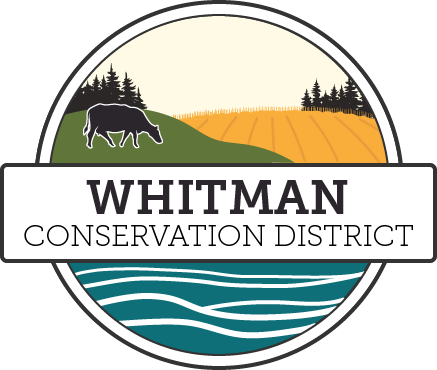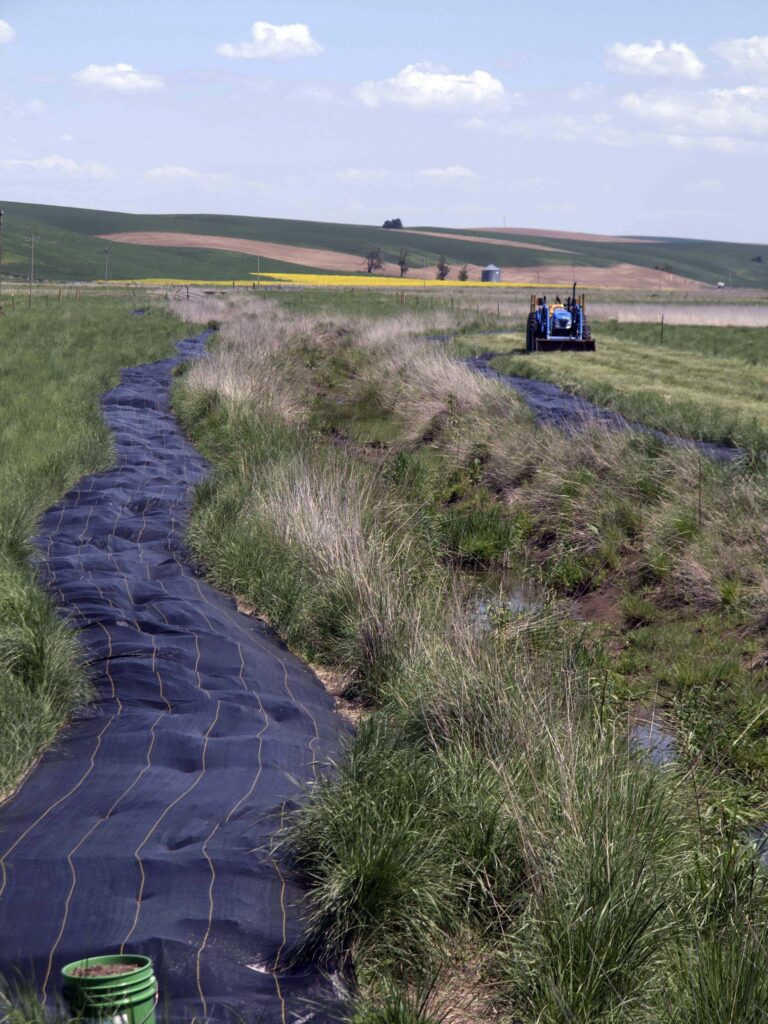Instream Habitat & Restoration
Importance of Instream Restoration in the Palouse
From years of non-ecologically minded agriculture practices throughout the Palouse, many of the native riverscapes and creeks in Whitman County have been degraded beyond the point of return from natural processes. Species that rely heavily on these riparian areas struggle immensely with their populations struggling to hold on.
One species in particular, the beaver, has been affected immensely by the degradation of riparian areas within the Palouse. This is extremely detrimental to the overall ecosystem because beavers are what is known as a keystone species, or a species whose presence within an ecosystem greatly affects the other wildlife within that ecosystem. Because of this, the removal of beavers from their natural setting leads to a decrease in overall habitat quality. In areas with a small to nonexistent beaver presence, a restoration practice that has become widely popular has been the use of Post Assisted Log Structures (PALS) and Beaver Dam Analogs (BDAs).
What Are PALS and BDAs, and Why Use Them?
By mimicking the same processes that Beaver dams take part in within waterways, Post Assisted Log Structures (PALS) and Beaver Dam Analogs (BDAs) are an extremely effective way to create wetlands upon which many species depend upon. Along with this, PALS and BDA’s help purify and control water by filtering silt from water bodies, aiding in water purity and quality. PALS and BDA’s can also slow flood waters, raise water tables, and reduce the amount of bank erosion occurring in a water way.
Post-Assisted Log Structures (PALS)
- woody material of various sizes pinned together with untreated wooden posts driven into the substrate to mimic natural wood accumulations
- low-tech restoration structure that mimics and promotes accumulation of large woody debris
- designed to influence hydraulic, hydrologic and geomorphic processes
- influence hydraulics at all flows, but are most likely to force geomorphic change during high flows
- can be built in a range of shapes and sizes
- increases physical complexity of waterways by altering patterns of erosion and deposition, promotes channel incision recovery by forcing channel widening at aggradation
Beaver Dam Analogs (BDAs)
- man-made structures that mimic the form and function of natural beaver dams; are temporary, permeable structures build with or without posts using a combination of locally available woody material, sediment, and other fill material
- also designed to influence hydraulic, hydrologic and geomorphic processes
- simple, non-destructive, and cost-effective method to restore the processes that are responsible for physically complex channel and floodplain habitat
- can be used to support established beaver populations, or can be used to promote many of the same processes affected by natural beaver dams
- can be build in a range of environments and in a variety of shapes and sizes using a range of natural materials
- height and length may vary according to location and objective, but all BDAs share a cross-sectional form that resembles a pyramid
- rather than a vertical wall, BDAs should have a broad base which promotes stability by reducing the potential for scour as water moves through and over the structures

